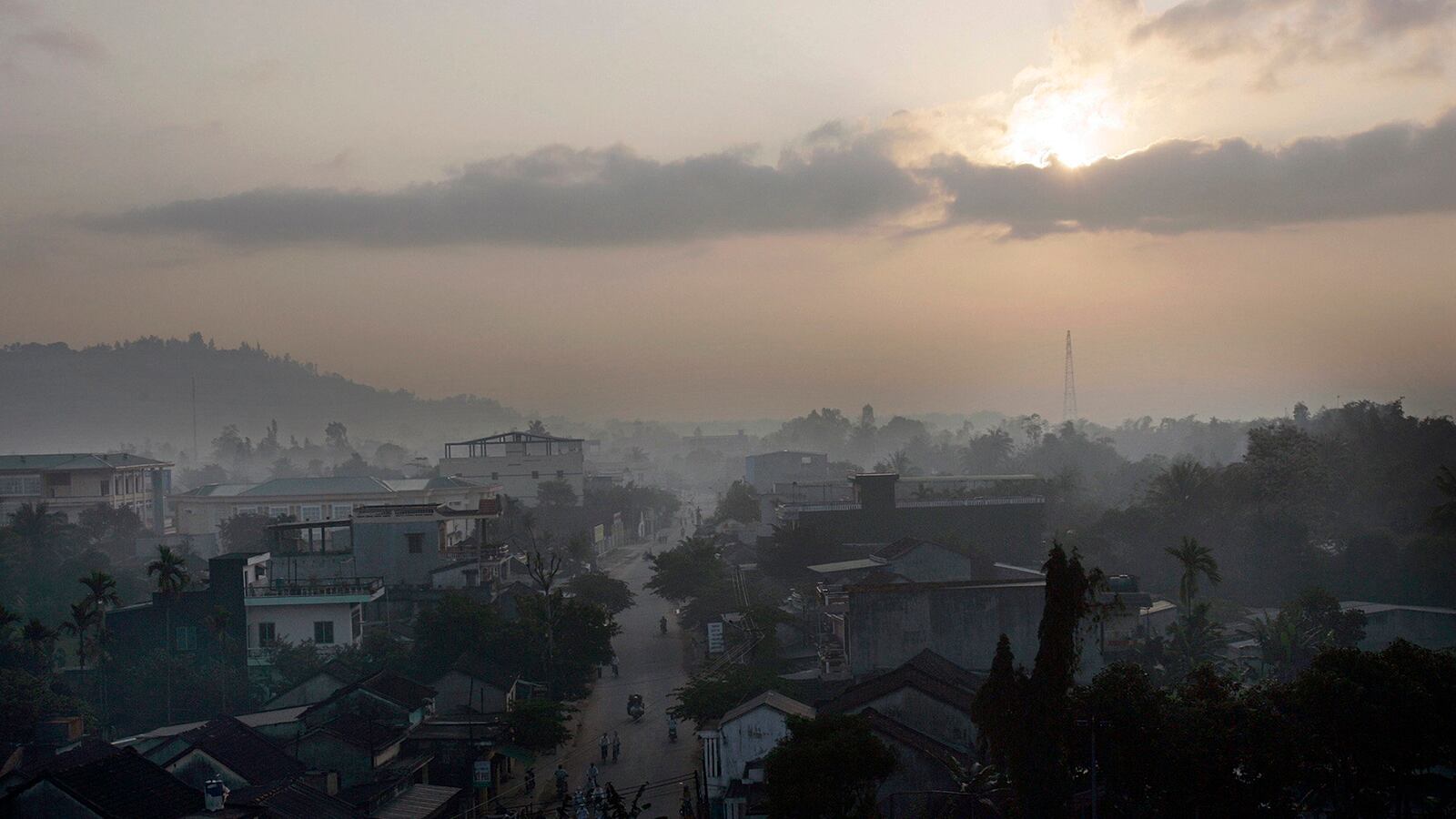Forty-five years ago today, March 16, roughly 100 U.S. troops were flown by helicopter to the outskirts of a small Vietnamese hamlet called My Lai in Quang Ngai Province, South Vietnam. Over a period of four hours, the Americans methodically slaughtered more than 500 Vietnamese civilians. Along the way, they also raped women and young girls, mutilated the dead, systematically burned homes, and fouled the area’s drinking water.

On this day, I think back to an interview I conducted several years ago with a tiny, wizened woman named Tran Thi Nhut. She told me about hiding in an underground bunker as the Americans stormed her hamlet and how she emerged to find a scene of utter horror: a mass of corpses in a caved-in trench and, especially, the sight of a woman’s leg sticking out at an unnatural angle which haunted her for decades. She lost her mother and a son in the massacre. But Tran Thi Nhut never set foot in My Lai. She lived two provinces north, in a little hamlet named Phi Phu which—she and other villagers told me—lost more than 30 civilians to a 1967 massacre by U.S. troops.
I remember Pham Thi Luyen who lived several provinces north in Trieu Ai village, Quang Tri Province. Decades old Marine Corps court martial records—which told a story of scared and angry Americans under command of an officer bent on revenge for recent casualties—led me to her hamlet. There, she and other survivors told me what it was like to live through a night of sheer terror, in October 1967, when Americans threw grenades into bomb shelters with women and children inside and gunned down men and women in cold blood. It was the night that Pham Thi Luyen became an orphan and 12 fellow villagers died.
I think of Bui Thi Huong who was, according to court-martial records, gang-raped in Xuan Ngoc hamlet by five Marines while her mother-in-law, sister-in-law, husband, and 3-year-old son were shot dead. Her 5-year-old niece was slain too, but by another method. The Marine who killed her did so by “mashing up and down with his rifle,” according to a fellow unit member. Another recalled, “I said one… two… three… And he was hitting the baby with the [rifle] butt!”
I recall too my conversations with Pham Thi Cuc, Le Thi Chung, and Le Thi Xuan who told me about a 1966 massacre by Americans in My Luoc hamlet that claimed the lives of 16 civilians. I think of Vi Thi Ngoi, an elderly woman who told me about the day American and South Korean troops opened fire on more than 100 of her fellow villagers and of the bodies that fell on her tiny frame, shielding her from the bullets. I remember how she explained what it felt like to lie there, for what seemed like an eternity, feigning death, amid the blood and viscera of friends and neighbors.

I remember my time spent talking with Jamie Henry, decades after he had been a young draftee and then a decorated medic. Just over a month before the My Lai massacre, Henry’s unit entered a small hamlet, rounded up the civilians—about 19 women and children—and gathered them together. A lieutenant asked his superior, a West Point-trained captain, what he should do with them. As Henry later told an Army criminal investigator in a sworn statement: “The captain asked him if he remembered the op order [operation order] that had come down from higher [headquarters] that morning which was to kill anything that moves. The captain repeated the order. He said that higher said to kill anything that moves.” Henry tried to intervene, but instead could only watch as fellow unit members opened fire on the civilians. An Army investigation determined the massacre occurred just as Henry said it did, but no action was taken against any of the troops involved, while the files were kept secret and buried away for decades.
In short, on this anniversary, I think of all the My Lais that most Americans never knew existed and few are aware of today. I think about young American men who shot down innocents in cold blood and then kept silent for decades. I think about horrified witnesses who lived with the memories. I think of the small number of brave whistleblowers who stood up for innocent, voiceless victims. But most of all, I think of the dead Vietnamese of all the massacres that few Americans knew about and fewer still cared about.
I think of the victims in Phi Phu and Trieu Ai and My Luoc and so many other tiny hamlets I visited in Vietnam’s countryside. And then I think of all the villages I never visited; the massacres unknown to all but the dwindling number of survivors and their families; the stories we Americans will likely never know.
I wonder if, 45 years hence, someone might be writing a similar op-ed about civilian lives lost these past years in Iraq or Afghanistan, Pakistan or Yemen; about killings kept under wraps and buried in classified files or simply locked away in the hearts and minds of the perpetrators and witnesses and survivors. Four and half decades from now, will we still reserve only this day to focus on these hard truths and hidden histories? Or will we finally have learned the lessons of the My Lai massacre and the many other massacres that so many wish to forget and so many others refuse to remember.






